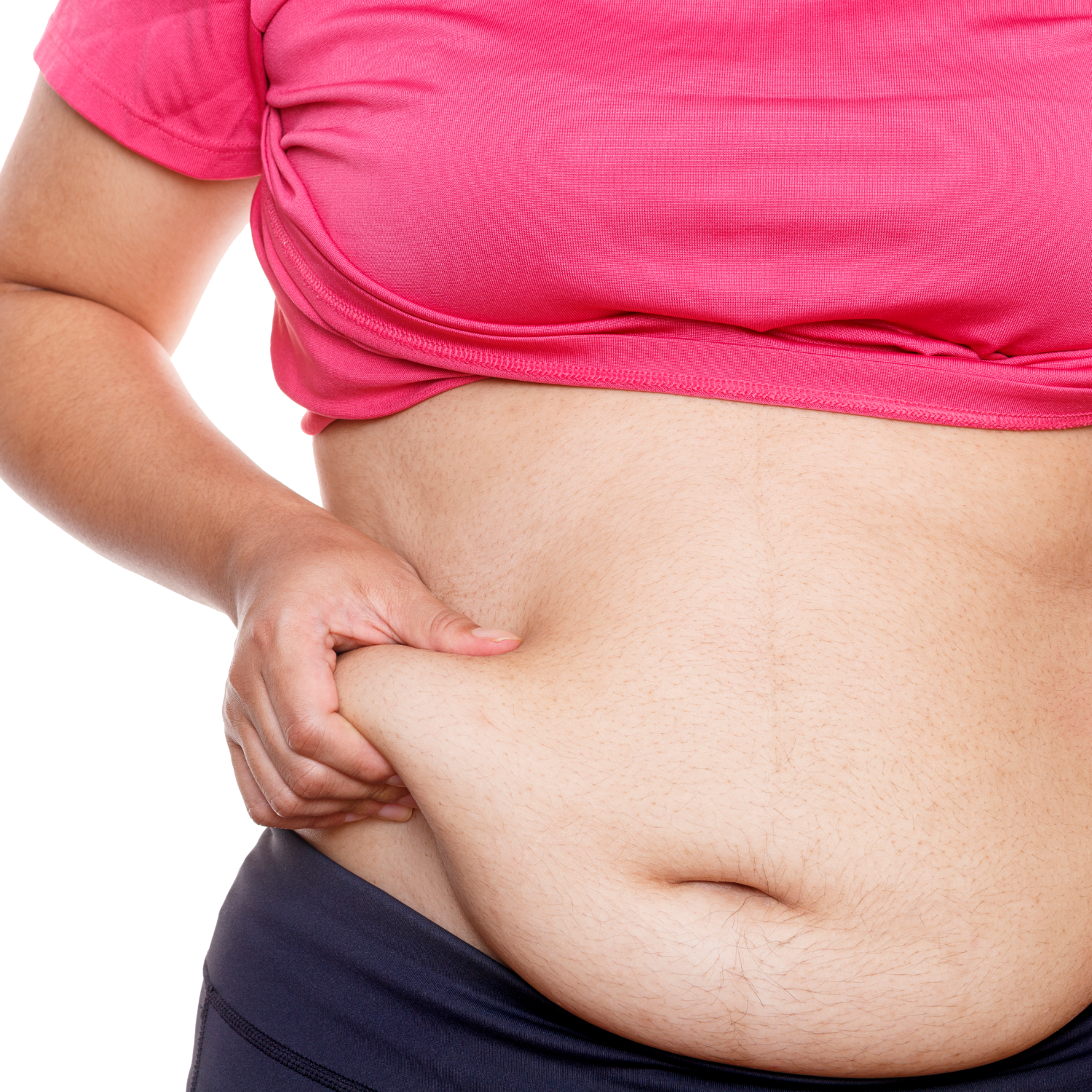Menopause Belly Fat: How Do I Get Rid of It?
Estimated Reading Time: 3 minutes
Menopause belly fat is a common concern among women going through menopause. This type of fat tends to accumulate around the waistline and is often difficult to get rid of.
Belly fat is made up of both subcutaneous fat (just below the skin) and visceral fat (deep belly fat around your major organs).
In this article, we explore what causes menopause belly fat and provide some tips for getting rid of it.
What causes menopause belly fat?
Genetics and hormones aside, lifestyle factors can play a major role in developing menopause belly fat.
Everybody has some fat around their belly. How much and where you carry it is related to your genes, hormones, age and birth weight, and whether or not you’ve had children.
When I think about my close friends growing up, I remember seeing all shapes and sizes - pears, apples and beanpoles! We all looked different and stored fat differently.
Now being older, I am seeing how menopause has become an equaliser for us all, as we all ‘thicken up’ around the middle and develop menopause bellies of different sizes. What causes this to happen?
Genetics and hormones aside, lifestyle factors can play a major role in developing menopause belly fat.
For example, many women become less active as they age, which can lead to weight gain. Also, If you’re approaching menopause and not eating enough good quality protein, you might start gaining weight, craving sugar (which drives unhealthy choices), and putting on belly fat.
A lot of my friends in menopause have started drinking more alcohol, which also contributes to hormonal imbalances and belly fat.
Now, the question to ask yourself is this: is menopause belly fat dangerous? Is it a health risk?
Is menopause belly fat dangerous?
We know that women who have a waist circumference of over 80cm have an increased risk of chronic disease, and that becomes a higher risk when waist circumference is over 88cm.
But just as important is the type of belly fat you have.
Women tend to gain the more dangerous kind of belly fat - the deep visceral fat around major organs like your stomach, liver and kidneys - during menopause when their hormones change, and this puts you at risk of serious diseases like cancer.
How to get rid of menopause belly fat
Exercising for 150 – 300 minutes per week
If you want to lose weight including visceral fat and keep it off, the best approach is to focus on changing the lifestyle habits that are directly related to your weight and more specifically, to your visceral fat levels;
Eating healthy portions of whole foods including adequate protein,
Exercising for 150 – 300 minutes per week
Sleeping at least 7.5 hours per night
Keeping stress at bay
Drinking less alcohol
Stop smoking and eliminate other toxins that disrupt metabolism.
How long does it take to lose belly fat?
With gradual, consistent changes in these habits, you will likely lose excess fat within 3 – 12 months.
In menopause, there are often other metabolic and hormonal shifts occurring in your body that may require a more tailored approach to kick start weight loss.
We highly recommend working with a naturopath, dietitican and/or coach who focuses on menopause weight loss to help you navigate the specific challenges you might face in making lifestyle changes.
Summary
Everyone has some belly fat, but when you’re a woman in menopause, you might tend to gain more of the more dangerous type of belly fat known as visceral fat.
Simple lifestyle changes can help you to lose menopause belly fat, including eating healthy portions including adequate protein, exercising for 150 - 300 minutes per week, reducing stress and alcohol, and quitting smoking.
If you can change your lifestyle habits, you’d expect to see some changes within 3 - 12 months. Working with a health and wellness coach can help you adopt and stick to lifestyle changes more easily, so you’ll likely see better results, faster.
What have you tried to lose menopause belly fat, and how did that work?
References/Citations
Australian Government Department of Health and Aged Care (2022) Body mass index (BMI) and waist measurement, Australian Government Department of Health and Aged Care. Australian Government Department of Health and Aged Care. Available at: https://www.health.gov.au/topics/overweight-and-obesity/bmi-and-waist (Accessed: March 23, 2023).
Australian Government Department of Health and Aged Care (2022) Physical activity and exercise guidelines for all Australians, Australian Government Department of Health and Aged Care. Australian Government Department of Health and Aged Care. Available at: https://www.health.gov.au/topics/physical-activity-and-exercise/physical-activity-and-exercise-guidelines-for-all-australians?utm_source=health.gov.au&utm_medium=callout-auto-custom&utm_campaign=digital_transformation (Accessed: March 23, 2023).
Australian Alcohol Guidelines (no date) New alcohol guidelines Australia - Alcohol and Drug Foundation. Available at: https://adf.org.au/reducing-risk/alcohol/alcohol-guidelines/ (Accessed: March 23, 2023).
Kim, J.H. et al. (2012) Cigarette smoking increases abdominal and visceral obesity but not overall fatness: An observational study, PloS one. U.S. National Library of Medicine. Available at: https://www.ncbi.nlm.nih.gov/pmc/articles/PMC3454366/#:~:text=The%20present%20study%2C%20which%20controlled,an%20increase%20in%20visceral%20fat. (Accessed: March 23, 2023).
Taking aim at Belly Fat - Harvard Health Publishing (2021) Harvard Health. Available at: https://www.health.harvard.edu/staying-healthy/taking-aim-at-belly-fat (Accessed: March 23, 2023).





